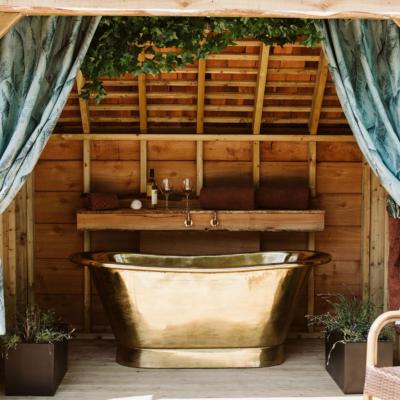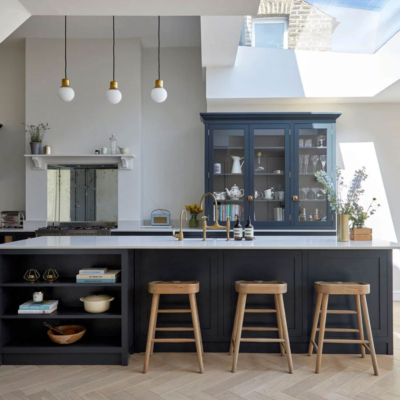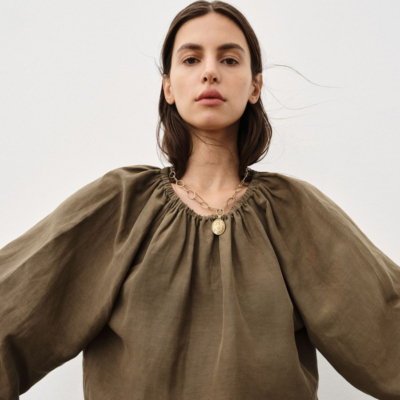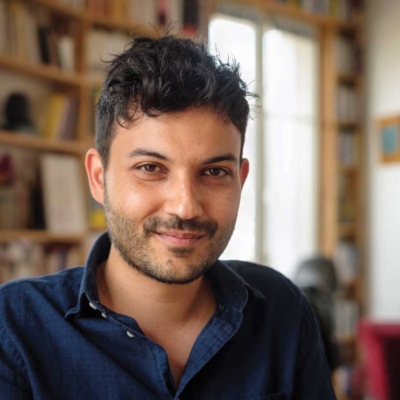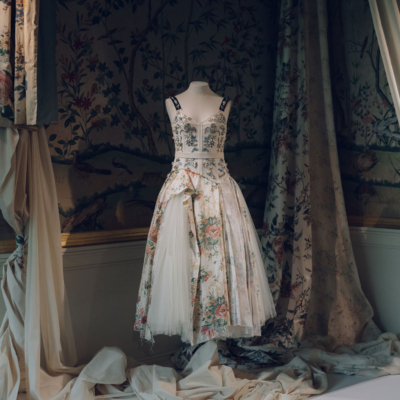The Dublin-based artist wanted his new series of figurative paintings called Until We Meet Again to be a reminder of pre-Covid times, and offer a hope or promise of their return …
Can you tell us about the starting point to this series of works?
Usually, I focus on figurative works in the winter, and plein air (outdoor) landscapes in the summer. This year, winter was more difficult with lockdown and with Covid-19 and as a result I found this time more challenging. I did two pictures that absolutely flopped! I kept trying to figure out what I could do; whether I would use Covid-19 as a theme, and paint people wearing masks for instance. I decided not to on the basis that there’s too much about Covid-19 out there, it’s in our faces all the time and we’re all tired of it. I thought that really what I’d prefer to do is help people remember the past, the times we had, the parties and socialising, and company. It’s this feeling of joy and fun that became central to the collection, which we have decided to name “Until We Meet Again.”

When did you begin your figurative works – I believe a trip to Paris was a formative experience?
Earlier in my career, I shied away from painting faces as I felt I didn’t have the skill set. Because I don’t have any formal artistic training, I thought that it would be too difficult for me to capture a likeness, or an expression. The beginning of my journey with figurative painting was over 20 years ago, when I went to Paris with the mother of my daughter Clara. Our relationship was struggling, and I thought a trip to Paris for New Year’s Eve would make things better. I knew Paris quite well, and in the evening, we went to my favourite bar. But when we got there, it was empty. I remember asking the barman why and he laughed and said that only the English, the Americans and the Australians celebrate New Year’s, not the French. We were totally disappointed and left to celebrate New Year’s on our own. On the way back to the hotel, I heard some music, someone tuning an instrument, so decided to investigate. We eventually found a bar with six musicians setting up their music and instruments. They handed me a paper with music on one side, and told us that there would be a singsong for New Year’s. Literally within five minutes, you couldn’t move, there were suddenly so many people in the bar. I started sketching the musicians and the people partying. I came back to Dublin with all the sketches and decided to paint them, to put them on canvas. The now closed Harrison Gallery on Lower Stephen Street, Dublin 2, took all the paintings. I often think that if I hadn’t gone into that bar in Paris I maybe never would have started painting figurative works. Also, if I hadn’t received encouragement from the gallery, I wouldn’t have stuck with it. I think if you try something different, and don’t get a good response from it, it’s most likely that you won’t continue with it. I was lucky to get such a positive reaction from Harrison Gallery, and from the public, with those early figurative works. Two of them made their way to the Citadelle Art Museum in Texas, and are still there since 1996. That trip to Paris was hugely influential to my career.

How would you say your figurative works have developed in style and subject matter?
The style of my figurative works has changed significantly over time. I’d say there’s more skill in my painting now. But it’s interesting; I recently received a commission to paint two pictures in my old figurative style, the person had some very large pictures from earlier in my career, and they wanted to build on that collection with pictures that matched. This forced me to look at my old work and in the process I realised that I’d also lost something; the naivety, the looseness of colour, the spontaneity. It made me think that I can also learn from my past, and that artistic progression doesn’t always mean improvement. I think that artistic blocks like I experienced earlier this January are part of my development in style. They’re good in that you have to stop, you drop old habits, and return with new ideas, and ultimately this is how I change and develop.

Can you tell us about some of the individual works within your new series?
The thing about figurative work, I always think, is it’s a bit like a fortuneteller looking into a tea cup, who sees something and translates it. For each painting, everyone comes up with a different story, based on how figures are sitting, or looking at each other, or staring out of the canvas. After the picture is finished, I ask people what they think the story is, and it can be entirely different from what I read into it. The picture becomes an amalgamation of stories, and relationships. The paintings are not intended to make a specific statement, they’re more so each person can look and find their own meaning, or see things that connect to them and their past.
For example, in “Fetch”, there’s a woman at the centre of the composition in a fur coat. The person who bought the painting told me that this figure reminded her of her mother, who was very elegant, and liked the nice things in life. She remembered her mother asking her father for a fur coat. For her, the painting was a way of remembering her mother, and for me, as an artist that’s a great compliment.
Secondary subjects, like the horse in “Eve”, breaks up a painting, adding a sense of the unexpected and making it become less just about people, but also our connection with other things. I also like to include a material aspect; the wine, the drink, the food, the glasses. Along with the animals, these items give the picture a sense of movement, for example, the falling glasses in “All My Tomorrows”. As a technical component, they break up a composition, and give a sense of setting. An art collector recently said to me that any time he looks at this painting, he can hear the noise of the room, the glass clattering and the people talking.

Have you depicted actual places in this series or an amalgam of memories?
The scenes are a mixture of my imagination and places where I’ve been. In landscape painting, I like to capture the spirit of a place, and I think there is an element of this, if more subtle, in the figurative works. I think I unconsciously paint my experiences with different people and cultures into my pictures and also my travels in other cities and countries worldwide.

Would you say that colour and form unites both your botanical and figurative work?
There’s a definite link between this series of figurative works and my botanical paintings, mostly in the backgrounds and prominent green tones. I’ve always had problems with the background in figurative works. I felt that if I didn’t fill the background, the picture wasn’t finished. For a while, I considered painting buildings or street scenes behind the figures, but I thought that it might take away from them and make the picture too busy. Floral and botanical painting has been a big part of my career, so I thought it would be interesting to incorporate them into my figurative work. For this series, I brought a tropical element into the paintings’ backgrounds, inspired by the time I spent as Artist-in-Residence at the Singapore Botanic Gardens in 2019, and the resulting exhibition “Botanical Fusion”. I wanted this sort of intentional crossover, a pulling together of two different themes from my painting career.

Your studio is also your home – have you become more disciplined or less disciplined since working from home?
As an artist, I have always worked from home and I wouldn’t want it any other way. Working from home gives me more time to paint, and to be able to see my paintings throughout the day. I can have dinner and come back to a painting again, rather than not being able to see it until the following day. Understandably, Agata, my wife, isn’t so keen to have the living space cluttered with easels and paints, so my studio is now downstairs, in the gallery! Having my studio where I live fills the space, the distance, between work and home, and gives me more freedom in my time.
Need To Know: Gerard Byrne’s exhibition “Until We Meet Again” can be viewed online at www.gerardbyrneartist.com.
LOVETHEGLOSS.IE?
Sign up to our MAILING LIST now for a roundup of the latest fashion, beauty, interiors and entertaining news from THE GLOSS MAGAZINE’s daily dispatches.





